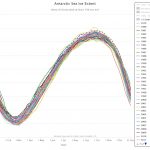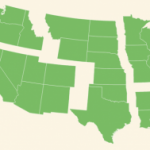This blog is generally not meant to be explicitly political, although there is no doubt that the posts and data provided here are minimally implicitly political. There will be occasions where a more explicitly political post will appear and this is one of these times. The NYT has an article on the proposed presidential budget and how it will impact science research: Scientists Bristle at Trump Budget’s Cuts to Research.
Still, the extent of the cuts in the proposed budget unveiled early Thursday shocked scientists, researchers and program administrators. The reductions include $5.8 billion, or 18 percent, from the National Institutes of Health, which fund thousands of researchers working on cancer and other diseases, and $900 million, or a little less than 20 percent, from the Department of Energy’s Office of Science, which funds the national laboratories, considered among the crown jewels of basic research in the world.
“As to climate change, I think the president was fairly straightforward: We’re not spending money on that anymore,” Mick Mulvaney, the director of the Office of Management and Budget, said at a White House briefing on Thursday. “We consider that to be a waste of your money to go out and do that.”




 This is an interesting Feb 7, 2017
This is an interesting Feb 7, 2017